- Paper and Pencil Activites
- Digital Resources
- Formative Assessment Idea
Linear Equations and Graphs Activities
Digital Resources
Interactive TI-Nspire Files to differentiate teaching and learning.
I used this interactive activity to introduce the equation of a line in slope intercept form. On page 1.2, students moved the red line to model the hockey stick. I took a screen capture of all student TI Nspire CX handhelds and used the images to compare the equations of the lines and introduce the significance of the coefficient of the x variable and the constant term. By comparing the equations of the two lines, students were able to determine that the parameters affect the position of a line on a graph. The next couple of pages include multiple choice questions that review vocabulary (as formative assessment) associated with lines. Pages 2.1 and 2.2 contain interactive sliders that allow students to explore the effect of parameters m and b individually. On page 2.3, both parameters are included with the equation of the line and can be manipulated.
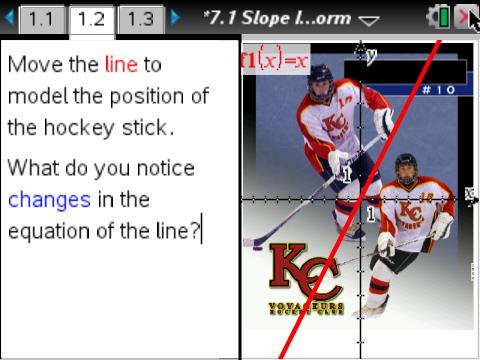
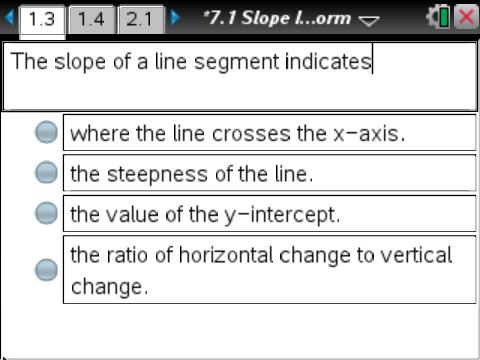
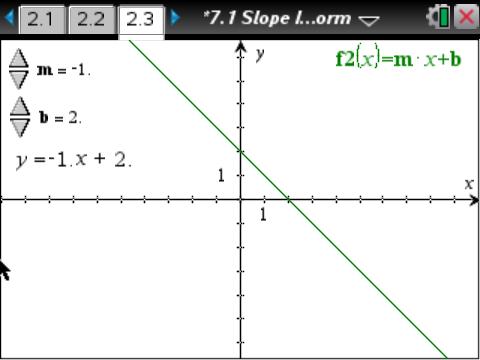
The Slope Intercept Form TI Nspire Activity supports the Mathematical Processes of Communication, Connections, Visualization, and Technology.
The TRANSFORM pedagogical shifts that are supported by this activity include shifting from Student as Knowledge Recipient to Student as Inquirer and Creator, shifting from Memorization to Higher -level Thinking, shifting from Competitive to Collaborative learning, and Shifting from Print-based to Multimodal representation.
I used this activity as a Formative Assessment Activity with my students. The file was downloaded to the student TI Nspire CX handhelds so students could complete the activity after school hours. Each hole on the mini golf course listed the coordinates of two points representing the golf ball and the hole. Students used the point-slope form of a linear equation to write the equation of the line that modeled the path of the ball to go in the hole. Notice that on hole 9, students needed to write the equations of three lines to display the path of the ball to go in the hole. I like this activity as formative assessment since it gives instant feedback to students.
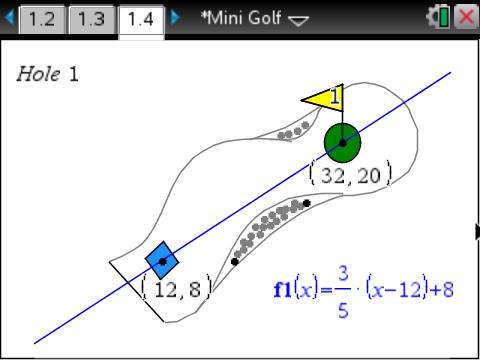
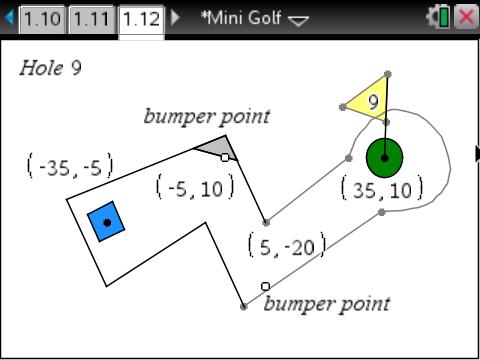
The next day, as students entered class, they were persistent in showing me that something was wrong... their line didn't go through the two points. It was interesting to me that students believed that there was something wrong with the technology before they believed that their equation was incorrect. After we reviewed their work and discovered the error in their equations, students worked on their own to fix the other holes that did not work. In my opinion, this was a great formative assessment activity since students were very persistent in fixing their error and making sure each path was correct. I was also impressed that most of my students were not interested in copying the equation from another student, but rather, wanted to make the equation work themselves.
The TRANSFORM pedagogical shifts that are evident in this activity include shifting from Summative to Formative Assessment, and shifting from Print-based to Multimodal representation.
The Mathematical Processes that are supported by this activity include Communication, Reasoning, and Technology.
This activity is similar to the Mini Golf activity above. The pictures used are from actual golf courses. Notice in the lower left corner of the screen, students are able to input the equation. This activity would work well for formative assessment as the results of the linear equation graphed are given to the students instantly.
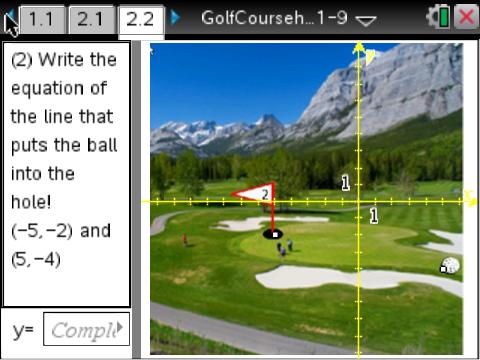
The TRANSFORM pedagogical shifts that are evident in this activity include shifting from Summative to Formative Assessment, and shifting from Print-based to Multimodal representation.
The Mathematical Processes that are supported by this activity include Communication, Reasoning, and Technology.